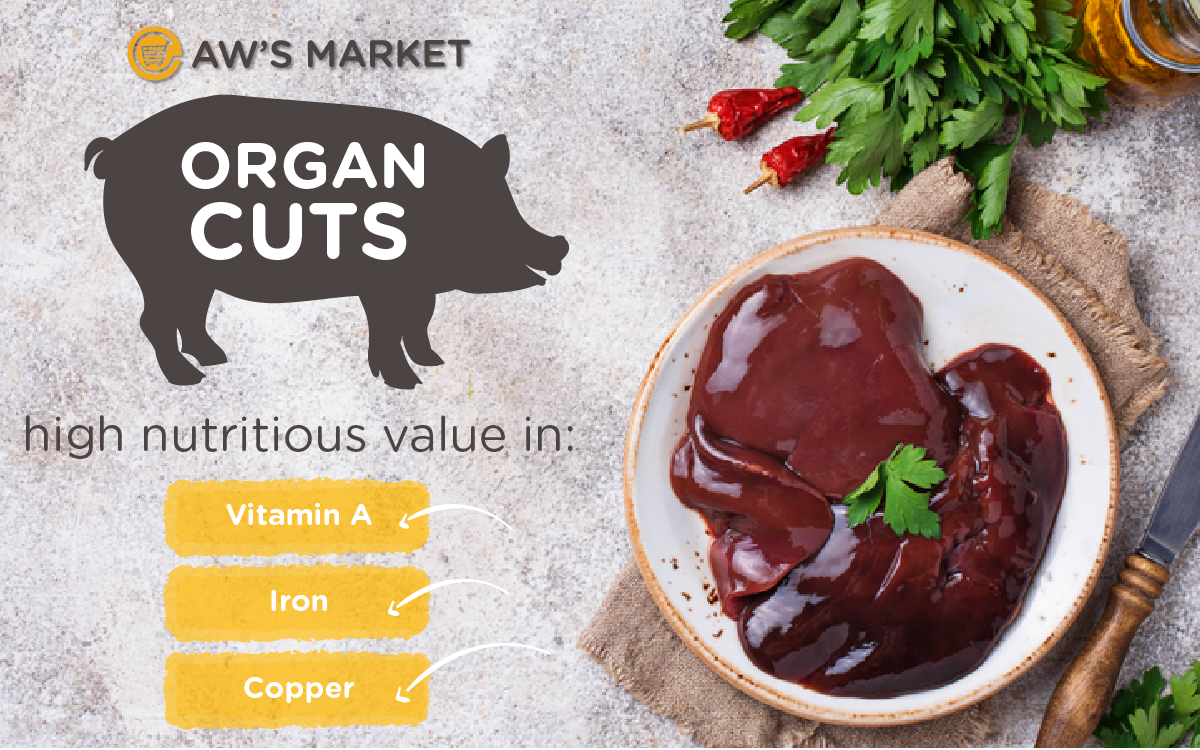At first sight, offal can be off-putting. The inner organs of animals are either exceptionally dark, exceptionally slimy or exceptionally unusual.
For a species that eats meat on the regular, why is the sight of animal innards exceptional? For every 2 chicken thighs, there ought to be a chicken heart that’s on the shelf. Yet, offals aren’t often seen on supermarket shelves, if at all.
“Today we are so removed from the sources of our food that we rarely think of meat coming from living, breathing animals. The steaks, chops, and ground meat we buy shrink-wrapped in the supermarket give no hint of the animals they came from.” – McLagan, Odd Bits
The inner organs of animals are highly perishable and take time to process well. It is not common to see them because they are not only difficult to handle but worse still, have little demand in the modern market. Every so often, it makes more sense to dispose of these parts than to put them on the shelves.
“As a percentage of our income, food is cheaper than it has been at any time in the past – especially meat.” – McLagan, Odd Bits
But this doesn’t mean that we ought to overlook these delicious parts which can still be found in wet markets or specialised butcheries like Aw’s Market. Domesticated animals, which were once prized possessions, used to be slaughtered for special occasions only. Being so, it was only natural that the prized animal, from nose to tail, would be used and/or consumed in its entirety.
“When man began hunting, he consumed all of his kill. First, he enjoyed the animal’s heart and brain. People of many cultures believed that by eating them they would acquire the animal’s strength, bravery and intelligence. Next the intestines, liver, kidneys and sweetbreads, the most perishable […] were enjoyed, either by the hunter as reward for his success, or reserved for an honoured elder of the group.” – McLagan, Odd Bits
In this post, let Aw’s Market share with you some tips on enjoying the cherished offal of the animal.
“In France these odd bits are still called les parties nobles, the ‘noble’s pieces’ or ‘prized parts’…” – McLagan, Odd Bits
Poultry les parties nobles
Gizzard
The gizzard is a tough muscle that carries a sac where the bird stores stone and grit to help digest its food. Despite being a part of the stomach, is not where the food is digested, so it has none of the digestive mucus usually associated with the gut.
Aw’s Recommendation: Teriyaki and grill it! It’s a meaty part that does well on a satay stick.
Also available as duck gizzard.
Liver
Livers are nutritionally dense and have a rich taste unlike their blander muscle counterparts. In fact, pregnant women are advised not to consume too much liver as too much Vitamin A in liver can harm the baby. As they are a rich in folate, iron and B certain vitamins, we can all benefit from eating liver in moderation.
Aw’s Recommendation: Poultry liver can be easily sliced and stir-fried, but we truly recommend deep frying it in batter for a different experience.
Pork les parties nobles
Heart
As both an organ and a working muscle, the heart is a part that was constantly pumping blood throughout the pig whilst it was alive. It will be a firm textured piece of meat with a dense meaty flavour.
Aw’s Recommendation: Clean it out well, and blanch before using it in soups or stir-fry. Would go well with a variety of soups including salted vegetable soup.
Kidney
Many people are afraid of the pungent smell of kidneys, but with the right preparation, this will not be an issue. At Aw’s market, the pork kidneys, by default, have inner whitish parts removed by our experienced butchers, so you don’t have to deal with any of the pungency.
Aw’s Recommendation: Soak in salt water before using it in soups or stir-fry. Would go well with a variety of soups including salted vegetable soup.
Liver
As a long-time staple of pig’s organ soup and bak chor mee, most of us will already be well-initiated to the taste of the iron-rich pork liver. Similar to the chicken liver, pork liver is nutritionally dense and so should be eaten in moderation.
Aw’s Recommendation: Slice thinly, marinate and add to soups OR stir-fry. Coat in a marinade of oil and flour before stir-frying to lock in the juices!
Tongue
The tongue is a meaty muscle that almost reminds one of clams when thoroughly cooked, but it is the most tender if cooked slowly.
Aw’s Recommendation: Clean thoroughly. Braise in stock of choice and slice thinly to serve.
Stomach
Also a long-time staple of pig’s organ soup and white pepper soup, the chewy pig’s stomach is an organ favoured for it’s delicious chewiness.
Aw’s Recommendation: White pepper soup with pig’s stomach, of course. Hee.
Small Intestine
Also a long-time staple of pig’s organ soup and kway chap, the small intestine does have a unique flavour in itself because of the white powdery substance within. Less chewy than the pig’s stomach and less pungent that the large intestine, the small intestine is a wonderful in-between that is easy on the palate.
Aw’s Recommendation: Braise it in soy-based stock of choice, and serve it chopped into bite-sized pieces.
